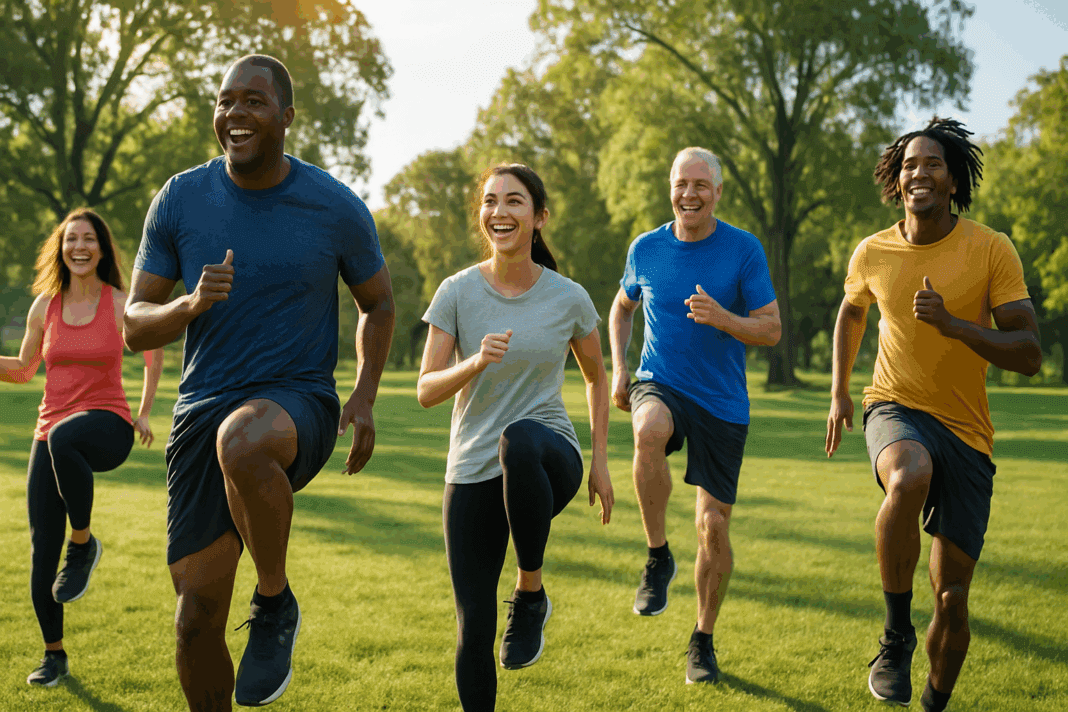In an age where convenience and health consciousness collide, standing cardio has emerged as a powerful and accessible way to elevate endurance and calorie burn without the need for specialized equipment or gym memberships. Whether you’re working from home, traveling, or simply prefer low-impact workouts that spare your joints while still delivering results, standing aerobic exercise provides a compelling and sustainable fitness solution. With research-backed benefits and a variety of movements to suit different levels of fitness, standing cardio moves offer both practical flexibility and physiological advantages that can support anyone aiming to improve overall performance, stamina, and long-term wellness.
You may also like: How to Increase Stamina and Endurance Naturally: Smart Training Tips and Nutrition Habits That Support Cardiovascular Fitness
Unlike high-impact or equipment-heavy workouts, standing cardio can be performed virtually anywhere, requiring only space to move and a willingness to engage your body. As we dive into the mechanisms, benefits, and science behind these exercises, it’s essential to recognize that their simplicity does not compromise their effectiveness. On the contrary, when performed correctly and consistently, these movements can foster cardiovascular health, muscular endurance, and even cognitive sharpness. This article explores the value of standing cardio and standing aerobic exercise through a lens of performance enhancement and sustainable health, making a strong case for why this form of fitness deserves a central place in modern training regimens.

The Science Behind Standing Cardio and Its Effect on Endurance
To understand the power of standing cardio moves, we must first consider how aerobic activity impacts the body at a cellular level. Aerobic exercise increases oxygen consumption by engaging large muscle groups over sustained periods. When performed in a standing position, this engagement often involves more complex coordination, balance, and muscle recruitment than seated or isolated movements. Standing cardio requires core stabilization, promotes spinal alignment, and calls upon both upper and lower body musculature to perform synergistically.
When regularly practiced, standing aerobic exercise enhances mitochondrial density and capillary growth in skeletal muscle tissue, improving the muscles’ ability to utilize oxygen efficiently. This physiological adaptation translates to increased endurance and stamina, allowing individuals to perform physical tasks for longer durations with reduced fatigue. Additionally, aerobic training boosts cardiac output and stroke volume, which strengthens the heart muscle and improves circulation.
Beyond cardiovascular and muscular endurance, standing cardio moves stimulate the release of endorphins and other mood-enhancing neurochemicals. This mental health benefit is a valuable complement to physical fitness, particularly for individuals managing stress, anxiety, or mood disorders. Furthermore, the dynamic, upright nature of these movements encourages better posture and spinal mobility, which are often compromised in sedentary lifestyles.
Ultimately, the science underscores that standing aerobic exercise not only supports endurance by optimizing oxygen transport and utilization but also improves neuromuscular coordination and mental resilience. These are critical components for anyone aiming to enhance their performance naturally and sustainably.
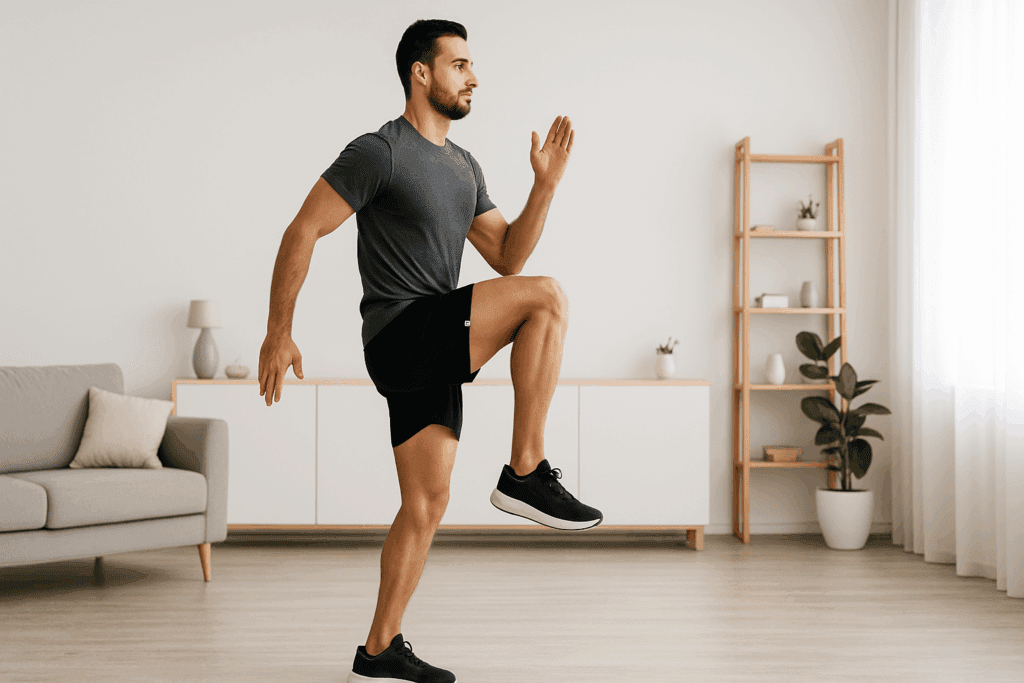
Performance Enhancement Through Functional Movement Patterns
Standing cardio is more than just a calorie-burning option—it incorporates functional movement patterns that closely mimic real-world actions. These patterns, such as squatting, reaching, stepping, and twisting, reflect the biomechanical demands of everyday life and athletic performance. Integrating these into a cardio-based workout encourages full-body coordination and movement efficiency.
Many traditional gym exercises isolate muscle groups, which can be beneficial for targeted strength gains but may lack the practical carryover to dynamic tasks. In contrast, standing cardio moves challenge multiple systems simultaneously. For example, a simple high-knee march engages the hip flexors, core stabilizers, quadriceps, and cardiovascular system in unison. When performed at moderate to high intensity, it elevates the heart rate while reinforcing motor patterns that are essential for walking, running, and climbing.
From a performance standpoint, this integration of movement promotes agility, balance, and reactive strength. These qualities are particularly valuable for athletes and aging populations alike. Moreover, the upright posture required for these exercises improves proprioceptive awareness, contributing to better body control and reduced injury risk. Functional standing aerobic exercises therefore provide an ideal framework for enhancing athletic performance while supporting everyday functionality.
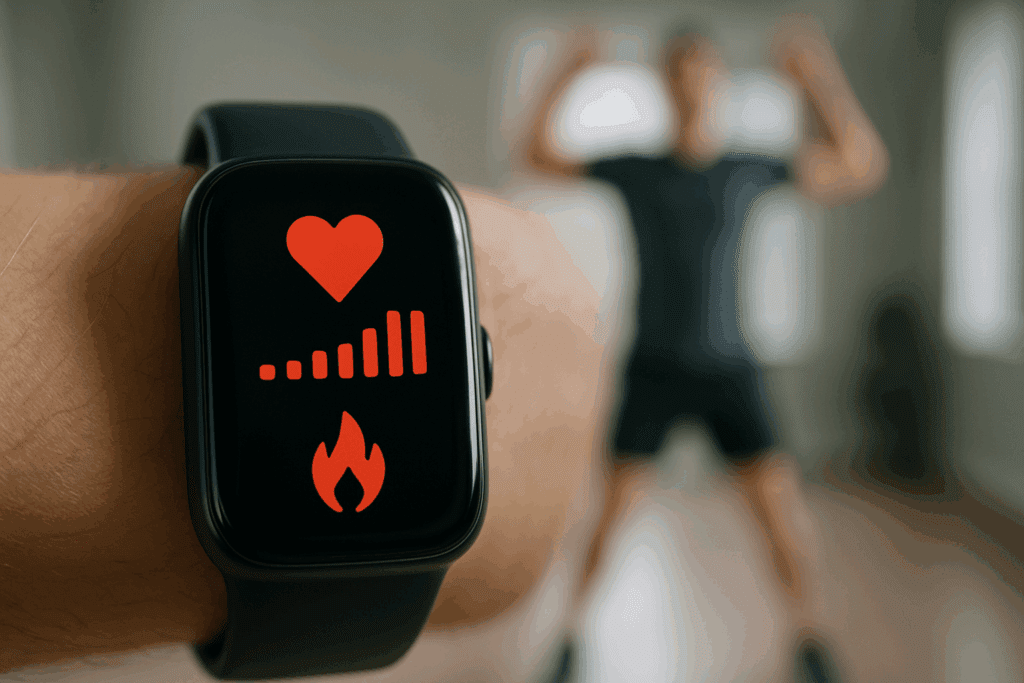
Caloric Expenditure and Fat-Burning Potential
A key attraction of standing cardio routines is their potential for substantial caloric burn without the impact stress of running or plyometrics. Standing movements, especially those involving compound patterns, activate multiple muscle groups, thereby increasing energy expenditure. This full-body involvement naturally boosts heart rate and metabolic demand, creating an environment conducive to both aerobic conditioning and fat oxidation.
Studies have shown that even moderate-intensity aerobic activity sustained for 30 minutes can result in significant caloric burn and improved lipid metabolism. When performed regularly, standing aerobic exercise helps shift the body’s energy utilization from primarily glucose to stored fat, particularly during longer sessions. This metabolic shift supports weight management and cardiovascular health over time.
Moreover, interval-style standing cardio routines—alternating between bursts of higher and lower intensity—can further amplify the post-exercise oxygen consumption (EPOC) effect, meaning the body continues to burn calories at an elevated rate even after the workout ends. This is particularly beneficial for individuals seeking efficient workouts with lasting metabolic impact. Whether executed as a steady-state session or a high-intensity interval training (HIIT) sequence, standing cardio moves have proven effective for maximizing fat loss while preserving lean muscle mass.
Accessibility and Inclusivity of Standing Aerobic Exercise
One of the most compelling aspects of standing cardio is its accessibility. Unlike many fitness trends that rely on expensive equipment, membership fees, or athletic prerequisites, standing aerobic exercise can be performed by individuals of all ages, fitness levels, and physical abilities. This inclusivity makes it a valuable tool for promoting population-wide health improvements.
Seniors, for example, often benefit from standing movements that enhance balance, prevent falls, and preserve mobility without risking joint damage. Likewise, individuals recovering from injury may use modified standing cardio routines as a way to reintroduce movement and build stamina gradually. Pregnant individuals or those with chronic conditions can often adapt standing cardio to accommodate their needs while still enjoying its aerobic benefits.
The simplicity of these exercises also encourages consistency, which is the cornerstone of any effective fitness program. When people feel confident in their ability to perform a workout, they are more likely to stick with it. In this sense, standing cardio supports not only physical health but also psychological commitment and long-term adherence to an active lifestyle.

Examples of Effective Standing Cardio Moves and How to Perform Them
To harness the benefits discussed above, it’s important to perform standing cardio exercises with proper form and intention. Some popular and effective standing cardio moves include high knees, standing jumping jacks, lateral steps with arm swings, standing mountain climbers, and side-to-side squats. Each of these movements engages different muscle groups while maintaining an upright posture, contributing to cardiovascular conditioning and muscular endurance.
High knees, for instance, involve driving the knees toward the chest in rapid succession while swinging the arms. This elevates the heart rate quickly and strengthens the hip flexors and core. Standing jumping jacks, a staple of elementary physical education, remain a powerful tool for warming up the body, engaging the shoulders, glutes, and calves while promoting rhythmic coordination. Lateral steps with arm swings improve coordination and lateral mobility, targeting the abductors and obliques.
Standing mountain climbers simulate the classic floor-based version but are gentler on the wrists and lower back. They involve rapid knee lifts while alternating arm reaches, providing a robust cardiovascular challenge with minimal joint stress. Side-to-side squats enhance gluteal and quadriceps strength while incorporating a cardio element through continuous movement.
These exercises, when performed in sequence or circuit format, can be tailored to suit varying intensity levels. Beginners may start with slower repetitions and longer rest intervals, while advanced individuals can increase tempo and reduce rest to sustain a challenging heart rate. Regardless of one’s entry point, standing cardio moves offer a scalable and adaptable path to improved health and performance.
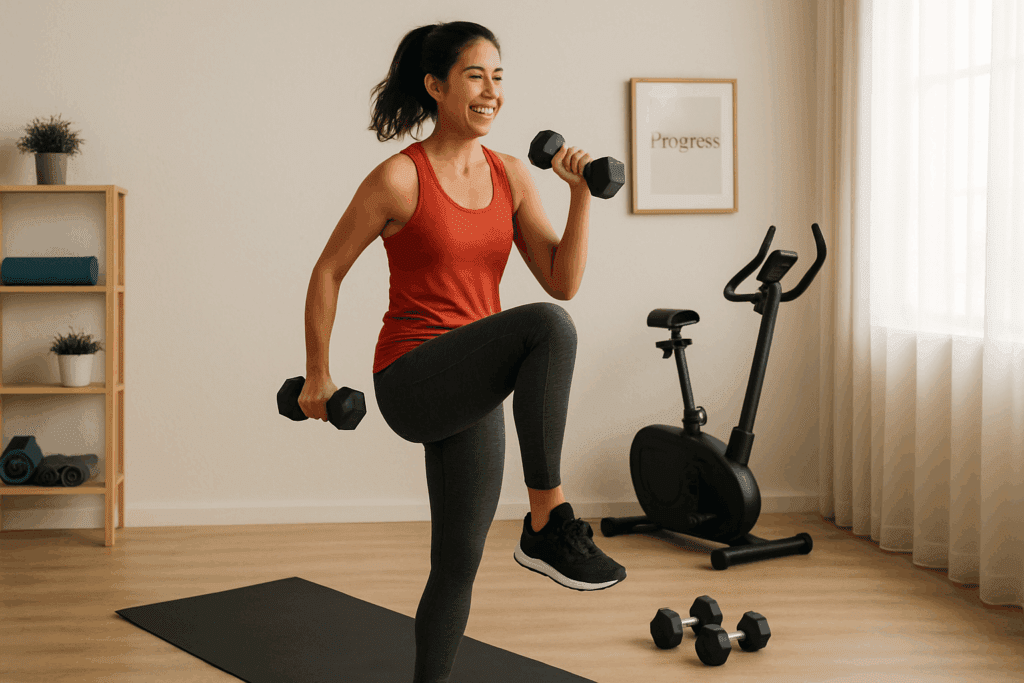
Integrating Standing Cardio into a Comprehensive Fitness Regimen
While standing aerobic exercise is effective on its own, it becomes even more powerful when integrated into a broader fitness plan. Combining standing cardio with resistance training, flexibility work, and recovery practices ensures a well-rounded approach that addresses all components of physical health. For example, alternating days of standing cardio and strength training helps optimize both metabolic and muscular adaptations.
Moreover, standing cardio can be used as a warm-up or active recovery strategy during more intense training cycles. Its low-impact nature makes it ideal for keeping the body moving without overloading the joints or nervous system. On lighter training days, a 20- to 30-minute standing cardio session can support circulation, aid in recovery, and reinforce movement patterns.
Time-pressed individuals may also use standing cardio as a “fitness snack”—short, frequent bouts of activity throughout the day that counteract the negative effects of prolonged sitting. This approach not only boosts energy and focus but also contributes to daily calorie expenditure and metabolic health. In the workplace or at home, standing aerobic movements can be seamlessly woven into daily routines to support continuous physical engagement.
The key to successful integration is variety and intentional programming. By varying movements, intensities, and durations, individuals can avoid plateaus and maintain interest. Whether it’s five minutes of high knees between meetings or a structured 30-minute workout, standing cardio fits flexibly into diverse lifestyles and goals.
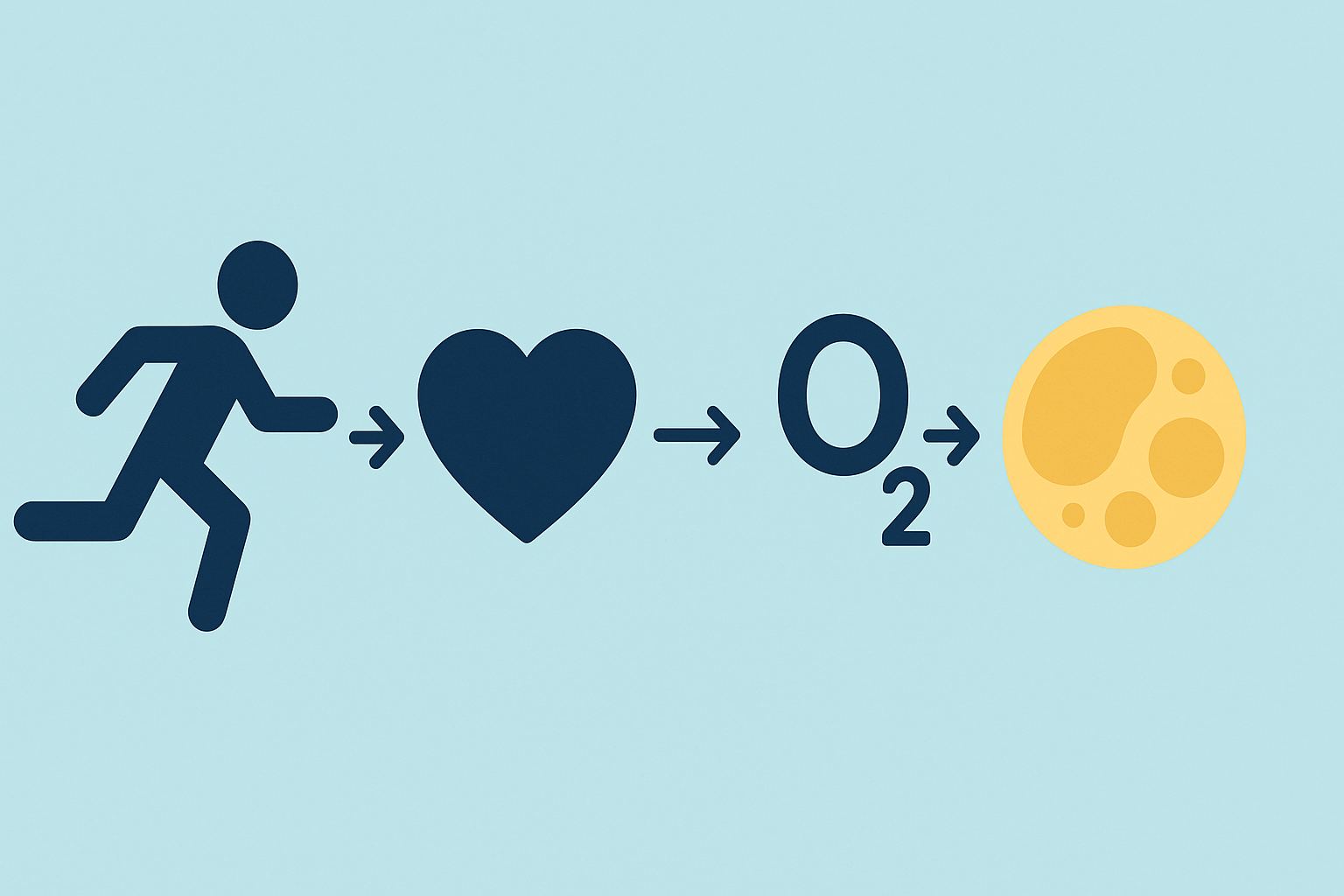
Mental Health Benefits of Standing Aerobic Exercise
In addition to its physical advantages, standing cardio also plays a significant role in mental health. Regular aerobic activity has been linked to reduced symptoms of depression, anxiety, and stress. This is largely due to the release of endorphins and the regulation of cortisol, the body’s primary stress hormone. Standing movements in particular provide an uplifting experience—literally elevating the body while encouraging a sense of progress and motion.
For individuals dealing with sedentary fatigue or mental burnout, the act of standing and moving can reinvigorate focus and mood. The rhythmic nature of many standing cardio routines offers a meditative quality, promoting mindfulness and mental clarity. Unlike high-stakes or performance-driven workouts, standing cardio invites participation without pressure, making it easier to enjoy and sustain.
Additionally, standing aerobic exercise improves sleep quality, which is foundational for cognitive function and emotional regulation. The physical exertion helps regulate circadian rhythms and increases the likelihood of falling asleep faster and staying asleep longer. As sleep quality improves, so too does resilience to stress, emotional stability, and overall well-being.
The holistic mental benefits of standing cardio moves should not be underestimated. In a world increasingly challenged by stress and digital overload, these simple movements offer a pathway to reconnect with the body and reset the mind.
Frequently Asked Questions: Standing Cardio and Aerobic Exercise Moves
1. Can standing cardio be just as effective as traditional workouts like running or cycling?
Absolutely, standing cardio can rival traditional workouts when it comes to effectiveness—especially when it’s programmed with structure and intensity in mind. Unlike running or cycling, which primarily target the lower body, standing cardio moves often involve full-body engagement, requiring coordination between the arms, legs, and core. This makes it a functional form of training that simulates everyday activities and enhances overall body control. Additionally, because standing aerobic exercise can be performed at varying levels of intensity, it allows for both steady-state training and high-intensity intervals, enabling users to burn calories and build cardiovascular endurance efficiently. The versatility and low-impact nature of standing cardio also make it more sustainable for long-term practice, particularly for those seeking joint-friendly alternatives.
2. How does standing aerobic exercise influence brain health and cognitive function?
Emerging research has shown that physical movement—especially aerobic activity—can play a significant role in supporting brain health, and standing aerobic exercise is no exception. When performing standing cardio moves that incorporate rhythm and coordination, the brain is engaged in motor planning, spatial awareness, and pattern recognition. These functions stimulate the prefrontal cortex, which governs executive function, memory, and decision-making. Additionally, the increased blood flow during aerobic exercise enhances oxygen delivery to the brain, supporting neural plasticity and reducing the risk of age-related cognitive decline. Some cognitive therapists even recommend coordinated standing movements as a way to improve focus and reduce mental fatigue in populations ranging from children with ADHD to older adults experiencing early signs of dementia.
3. Are there specific benefits of standing cardio for people who work sedentary jobs?
Yes, standing cardio is particularly well-suited for individuals with sedentary jobs, as it offers a simple and accessible way to counteract the negative effects of prolonged sitting. Engaging in brief bouts of standing aerobic exercise throughout the workday can help improve circulation, alleviate lower back stiffness, and combat postural fatigue. Research has linked frequent low-intensity movement with lower risks of metabolic syndrome, even among individuals who meet recommended weekly exercise guidelines. Incorporating standing cardio moves during breaks or between meetings not only burns calories but also reactivates muscles that become dormant during long periods of sitting. Over time, this can lead to improved posture, reduced risk of musculoskeletal pain, and a more energized state of mind throughout the day.
4. How can athletes use standing cardio to supplement their training without risking overtraining?
For athletes, standing cardio offers a valuable form of active recovery or cross-training that complements more intense strength or sport-specific workouts. Because standing aerobic exercise can be performed at a moderate intensity, it provides cardiovascular benefits without overstressing the joints or central nervous system. It’s especially effective on rest days or during deload weeks, helping athletes maintain movement quality and metabolic activity while allowing their bodies to recover from high-impact sessions. Strategic incorporation of standing cardio moves—such as marching with arm swings, lateral shuffles, or low-impact jumping jacks—can also support coordination, balance, and agility. This approach fosters long-term performance development by improving aerobic capacity without increasing the risk of injury or burnout.
5. What psychological or motivational strategies can enhance adherence to a standing cardio routine?
Maintaining consistency with any fitness routine often comes down to enjoyment and psychological engagement, and standing cardio can be tailored to meet both criteria. One strategy involves setting small, measurable goals such as performing five minutes of standing aerobic exercise every hour during the workday. Another approach is to pair standing cardio moves with music, podcasts, or video routines that make the experience feel more like a dance or energizing ritual rather than a workout. Gamification—using fitness apps or challenges—can also make sessions more interactive and rewarding. Lastly, social reinforcement plays a powerful role; virtual or in-person group classes built around standing cardio can increase accountability and make the routine more enjoyable.
6. Are there emerging trends in fitness that are integrating standing cardio into broader wellness strategies?
Yes, one of the most promising trends is the integration of standing aerobic exercise into workplace wellness programs, school curriculums, and even rehabilitation centers. Wellness experts are beginning to recognize the importance of frequent, low-impact movement throughout the day as a counterbalance to our increasingly sedentary culture. For instance, companies are piloting “movement pods” where employees can perform short standing cardio routines between tasks to increase productivity and reduce stress. In educational settings, incorporating standing cardio moves into classroom activities has been shown to improve focus and engagement among students. Rehabilitation professionals are also using these exercises to help patients reintroduce movement in a safe and scalable manner after surgery or injury.
7. How can individuals with limited mobility or balance issues safely practice standing aerobic exercise?
For individuals with mobility challenges, standing cardio can be modified to suit a wide range of physical abilities. One key strategy is to perform moves while lightly holding onto a stable surface, such as a countertop or chair, to provide balance support during motion. Starting with slower, smaller movements—such as heel raises, gentle side steps, or slow marches—allows for controlled engagement of the cardiovascular system without risking instability. Over time, as strength and balance improve, participants can graduate to more dynamic standing cardio moves. It’s also important to wear supportive footwear and clear the exercise area of any tripping hazards. In some cases, consulting with a physical therapist can help tailor a standing aerobic exercise plan that aligns with individual needs and goals.
8. What’s the long-term impact of incorporating standing cardio into daily life versus relying solely on gym-based workouts?
Long-term health outcomes may be significantly enhanced by incorporating standing cardio into daily routines, even in small doses. Unlike structured gym sessions that often require designated time and location, standing aerobic exercise can be practiced in spontaneous, short bursts throughout the day. This frequency of movement helps maintain higher levels of non-exercise activity thermogenesis (NEAT), which contributes to a more efficient metabolism and reduced risk of chronic disease. Moreover, standing cardio encourages a mindset of continual motion, reinforcing the idea that fitness is not confined to gym walls. Over time, this shift in behavior can yield improvements in mobility, endurance, mood regulation, and overall healthspan—potentially reducing healthcare costs and improving quality of life well into older age.
9. Can standing cardio support hormonal balance, particularly for women during midlife transitions?
Emerging evidence suggests that aerobic activity, including standing cardio, can positively influence hormonal health—particularly during periods of hormonal fluctuation such as perimenopause and menopause. Regular standing aerobic exercise supports the regulation of insulin sensitivity and cortisol levels, which can become dysregulated during midlife. Additionally, physical activity boosts serotonin and dopamine production, helping to manage mood swings and energy dips often associated with hormonal shifts. Standing cardio moves that combine rhythmic motion with resistance—such as arm punches or weighted marches—can further support bone density and muscle mass, which tend to decline during this life stage. Incorporating this form of exercise regularly may contribute to more stable hormonal health and a smoother transition through midlife for many women.
10. How does environmental context affect the effectiveness of standing cardio routines?
The setting in which you perform standing cardio can have a surprising impact on its effectiveness. Factors such as lighting, air quality, floor surface, and even background noise can influence your performance, motivation, and safety. For example, performing standing cardio in a well-lit area with natural light has been associated with improved mood and energy levels. Likewise, working out on a firm, non-slippery surface provides better traction and reduces the risk of injury during fast-paced standing cardio moves. Ventilation and fresh air also play roles in perceived exertion and post-workout recovery. Taking time to create a comfortable and inspiring environment—even if it’s just a corner of a room—can significantly elevate the experience and outcomes of a standing aerobic exercise routine.
Conclusion: Why Standing Cardio Deserves a Permanent Place in Your Performance Toolkit
Standing cardio and standing aerobic exercise represent more than just an alternative workout—they are a cornerstone of functional, accessible, and evidence-based fitness. With benefits spanning endurance, performance enhancement, mental clarity, and metabolic health, these exercises meet the demands of a modern lifestyle without requiring complicated routines or costly investments. Whether you’re a high-performance athlete looking to improve agility and stamina or someone seeking a manageable path to better health, standing cardio moves offer a practical and impactful solution.
By incorporating standing aerobic exercise into your weekly regimen, you tap into a form of movement that strengthens the heart, builds muscle endurance, improves coordination, and enhances mental well-being. Its inclusivity and adaptability make it suitable for all fitness levels, ensuring that everyone can experience the transformative benefits of consistent aerobic activity.
In a fitness culture that often emphasizes extremes, standing cardio reminds us that effective training doesn’t have to be loud, flashy, or grueling. Sometimes, the most powerful changes begin by simply standing up and moving with intention. For anyone seeking to boost endurance and burn calories in a sustainable, natural way, standing cardio offers a path worth following—one step, march, or side shuffle at a time.
Was this article helpful? Don’t let it stop with you. Share it right now with someone who needs to see it—whether it’s a friend, a colleague, or your whole network. And if staying ahead on this topic matters to you, subscribe to this publication for the most up-to-date information. You’ll get the latest insights delivered straight to you—no searching, no missing out.
Further Reading:
10 Aerobic Exercise Examples: How to, Benefits, and More
20 cardio exercises to do at home with minimal equipment, from beginner to advanced

